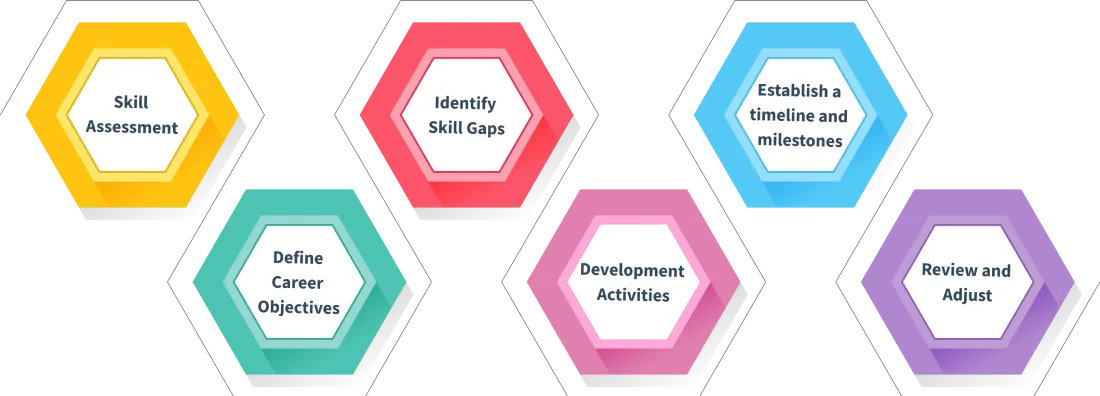Home / E / Employee Development Plan (EDP)
An Employee Development Plan (EDP) is an organized approach to facilitating the growth of employees' potential while helping them with their development. As things move quickly at work and the business environment continues to evolve, it is no longer enough to just hire an employee who has the right skills; organizations must invest in the development of their employees to retain talent and remain competitive.
Whether using a formal employee development plan template to put your EDP in place or doing so without a template between manager and employee, the objective remains the same: close skills gaps, prepare employees for their next role, and develop employees' aspirations by aligning with organizational goals.
The plan that your organization develops strategically not only offers the employee the opportunity to develop the capabilities to do their job today but also equips them for the road in their career. An EDP is a valuable HR tool that adds value to the employee and organization, improving morale and developing our next generation of leaders.
Employing a wide range of employee development plan examples allows organizations to customize the plan to meet their specific needs. Providing tangible means of work, workplace strategies will increase employee engagement, employee retention, and workplace productivity
An employee development plan is a comprehensive strategy to assist an employee in improving skills, knowledge, and performance to continue their career growth and help the organization succeed. It includes setting goals, mapping resources, and longitudinally tracking progress.
An employee development plan lays out ways to grow. Its main function is to equip employees with the tools and direction they need to advance in their careers. Whether that is developing a new skill, transitioning to a new role, or improving their performance, the plan specifies what they need to do - and how.
It is of great value because it provides two sides of a coin: employees have clear development paths, and organizations have an ever more skilled, engaged, and loyal workforce. When done properly, development planning moves a job to a career.
Then there’s the ability to assist HR teams in discovering high-potential employees, generating succession plans, and ensuring the right culture fit, assuming people are in the right roles. While employee development plans were easy to produce, getting them to be developed consistently across teams, departments, and divisions was a lot more easily enabled with a standard employee development plan template.
And perhaps the biggest benefit is better transparency. Employees now know exactly what’s expected of them – with clear goals, measurable steps, and regular feedback to help them grow.
Different goals require different plans. Here are the most common plans:
All kinds of plans have specific objectives, but use the same common principles of setting goals, resourcing, and tracking your progress.

Creating a development plan does not have to be complicated - it just needs to be intentional. Here are some steps you can take to create a relative development plan:
Using real-world employee development plans for context and ideas certainly can enhance the process.
Whether organizations provide a formalized employee development plan template or not, structured employee development examples let organizations standardize this experience across departments while allowing for the personalization of the content for their employees.

Mapping out the benefits of employee development is both strategic and cultural:
While being beneficial, development planning can face challenges:
Overcoming these barriers will take time, technology, and buy-in from the leadership team. Employee development plan templates that allow customization and a way for regular feedback to be a part of the plans will contribute to better outcomes and goal achievement.